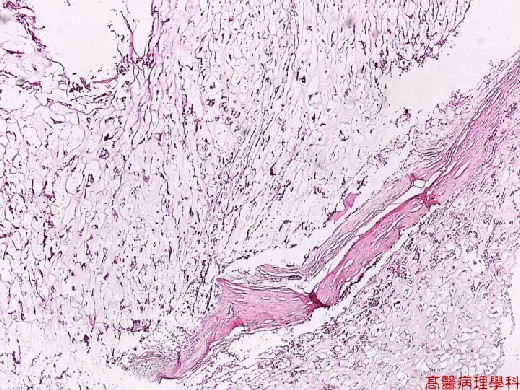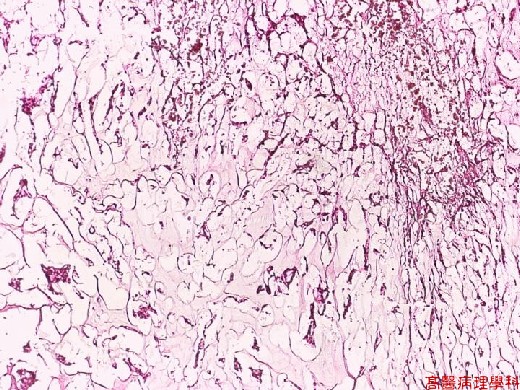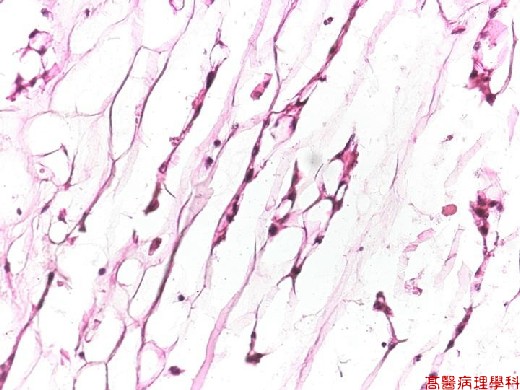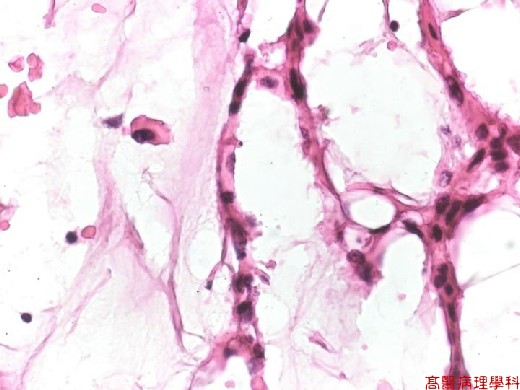《Slide 166.》Chordoma, Sacrum
A. Brief Descriptions:
-
Definition: a notochord-derived tumor of the skull and spine.
B. Gross Findings:
-
Infiltrative, osseodestructive,often lobulated lesion with mucoid appearance.
-
極少見intratumoral hemorrhage.
C. Micro Findings:
-
Oval or round lobules of vacuolated cell tumors delineated by fibrous septa in myxoid matrix in cording pattern.
-
Tumor cells in epithelial or “hepatocyte-like” rows or cords or strands.
-
Other tumor cells have abundant eosinophilic vacuolated cytoplasm (physaliferous cells) and indistinct cell boundaries (resulting in a syncytial quality).
-
Between the cell cords is abundant extracellular mucoid matrix.
-
有時可見malignant foci,病理特徵是hyperchromatism、pleomorphism、mitotic activity.
D. Others:
-
Notochordal tumors沒有benign的,它是屬於malignant nonvascular tumors。
-
臨床特色:
-
Distributed most often in the midline along the craniospinal axis, approximately half arise in the sacrum,one third in the spheno-occipital region or clivus,and the remainder in the articulating vertebrae
-
Male predominate and most often over 30 years old
-
Sacral chordoma是具有破壞性的intrasacral tumors,臨床上因為壓迫到其他神經,所以會引起疼痛、擴約肌功能障礙等神精學上問題。
-
而生長在腦內的(Intracranial lesions)會引發unilateral cranial nerve signs的臨床症狀。
-
轉移的可能地方: lung,lymph node,skin.
-
-
Treatment
-
Wide excision and postoperative radiotherapy.
-
-
Prognostic factors
-
extent of resection.
-
patient age(40歲以下預後較好)
-
presence of mitotic activity.
-
-
可能轉成的惡性腫瘤有undifferentiated spindle cell tumor、malignant fibrous histiocytoma、chondrosarcoma.
E. Reference:
-
Robbins Pathologic Basis of Disease, 6th ed. P.1584-1585.
|
|
【 Fig. 166-1 (LP)】Lobulated pattern of tumor with myxoid stroma.
|
|
【 Fig. 166-2 (LP)】Myxoid stroma.
|
|
【 Fig. 166-3 (HP)】Tumor cells in epithelial rows or cords with myxoid stroma.
|
|
【 Fig. 166-4 (HP)】Physaliferous cells with abundant vaculated cytoplasm.



